New, densely cultivated, farming methods for hazelnut and walnut trees are beginning to gain popularity in Spain, which is a country that has always been considered a point of reference in Europe when it comes to implementing innovative trends in the cultivation of fruit, citrus and olive trees. Specifically, the new way of growing olives and nut fruits, initiated by Spanish agronomist Jordi Mor, the former promoter of the Zaragoza model for managing almond trees, consists of introducing the single-walled axis for walnut and the bushy vase monocauliculture instead for hazel.
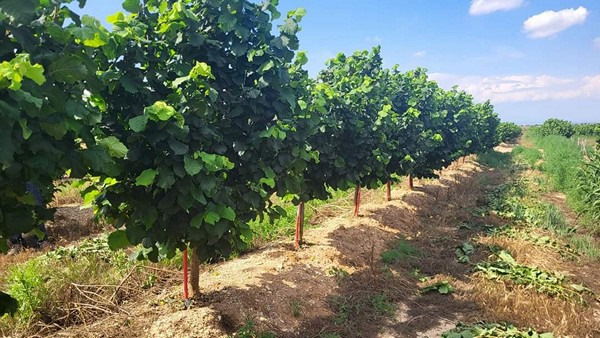 Hazelnut high density (planting spacing 4.0x1.80m)
Hazelnut high density (planting spacing 4.0x1.80m)
Agronomist Vito Vitelli, back from Spain, spoke on the subject, sharing management systems reminiscent of those observed during his time on the Iberian Peninsula with farmers who might be interested in introducing them in Italy as well.
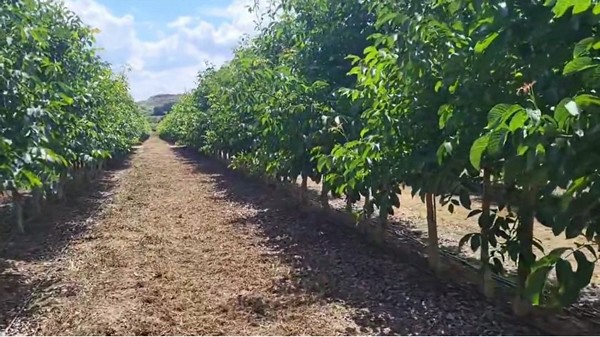 High-density walnut planting
High-density walnut planting
"A hazelnut grove transplanted in March 2021 on raised planting bed has already achieved remarkable results in terms of growth and productivity. After being placed in the planting bed, it was staked in monocaulas at the height of 80 cm. A bushy pot was obtained from the side branches. The gradual release of suckers was also managed in the best possible way to allow the canopy to develop without competition."
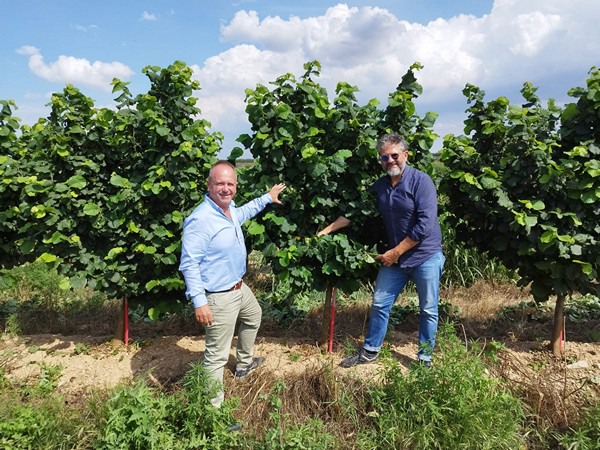 Jordi Mor and Vito Vitelli
Jordi Mor and Vito Vitelli
For the walnut tree, the single-axis technique that self-regulates the plant allows pruning interventions to be kept to a minimum. "A 'good neighbor' relationship between the root systems of plants of the same species is created," continues Vitelli. "This leads to a reduction in the exploratory activity of the roots, resulting in a containment of the vegetative growth. In short, self-regulation reduces growth activity, to the benefit of productivity."
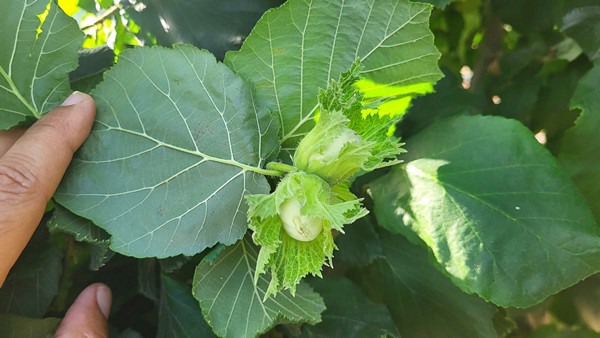
The planting density is around 1,300 to 1,500 plants/hectare with a planting spacing of 4.0 x 1.80 m for hazel and 5.0 x 1.25 m for walnut. "Less than three years after transplanting, fruit set is already noticeable," continues the technician. "The initial investment costs are high, due to the large number of plants, but the payback time is very fast and the productive efficiency, in terms of quantity and quality of production, is considerable. However, the role of the agronomist remains crucial, not only for technical reasons, but also because it is good to prepare the farmer for this new system of cultivation, which still implies a presence, in the case of walnut, of structures in the field, such as brace poles and iron wires, necessary to support the plant in the first years of growth.
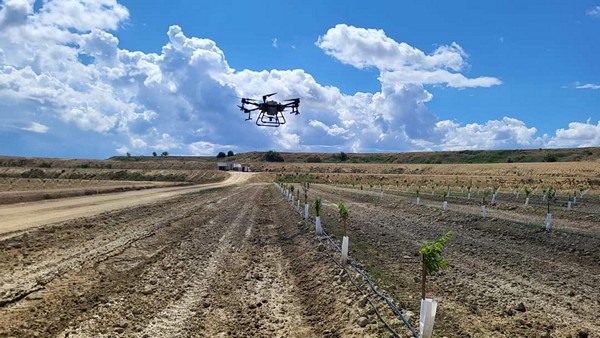 Use of drones for pest management
Use of drones for pest management
There is great interest among the new generation of European investors in finding forms of farming that are also super-mechanizable, to cope with labor shortages. "Manual interventions are minimized. The more plants the greater the area of leaf exposure, the more productive. In Italian nut production areas, obsolete cultivation techniques, which have been stopped for more than fifty years now, are still being adopted. Binding oneself excessively to traditional patterns, without having a vision, could mean becoming a victim of it," concludes agronomist Vitelli.
For more information:
Agronomo Vito Vitelli
+39 3392511629
vitovitelli@tiscali.it
vitovitelli.blogspot.com
